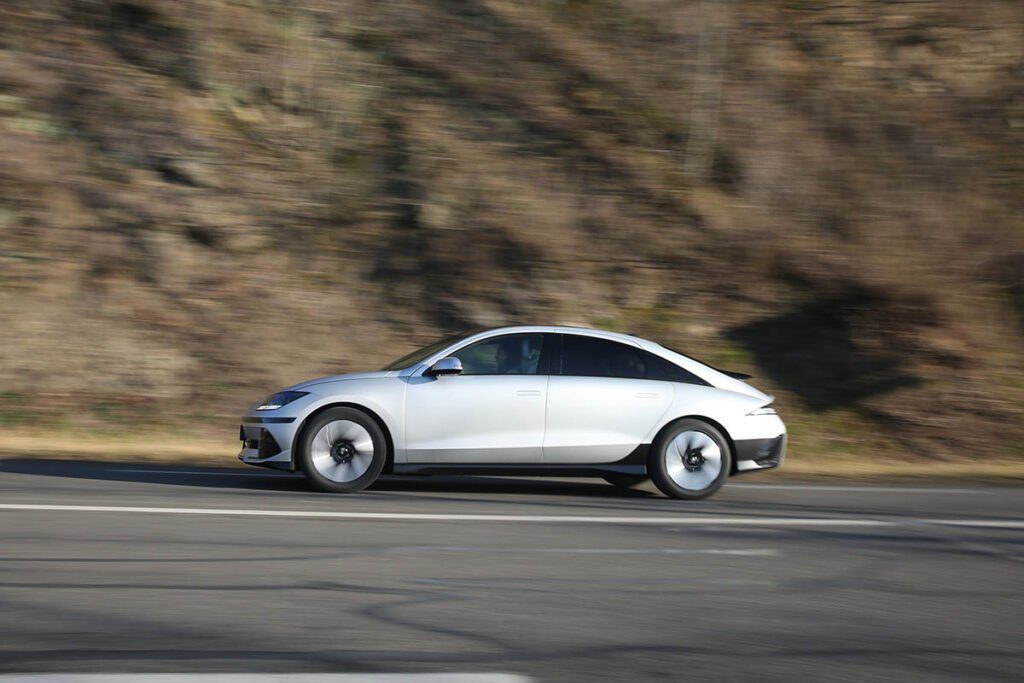Don’t say “liters per hundred” but “kilowatt-hours per hundred.” The consumption of an electric car is indeed measured with this unit. As with a thermal vehicle, it varies depending on the vehicle and the type of journey made. Automobile-Propre explains how to reduce it to save energy as much as possible.
The catalog of electric vehicles available on the market is expanding year by year. From micro-cars to large SUVs, there is now something for everyone. But from the small Renault Twizy to the bulky Audi Q8 e-tron, consumption statistics differ greatly. Less than 10 kWh/100 km for the 470 kg small car and more than 20 kWh/100 km for the 2.5-ton behemoth.
As you have just read, the “kilowatt-hour” (abbreviated kWh) measures an amount of electricity. The unit is also used to represent the storage capacity of batteries. Thus, the term “kWh/100 km” establishes the average amount of energy consumed by an electric car to travel 100 kilometers.
With this value, it is easy to know whether a vehicle is more or less energy-consuming and to get an idea of its range. For example, a car equipped with a 50 kWh battery showing an average consumption of 15 kWh/100 km can travel about 330 kilometers on a full charge.
It is important to know the consumption of an electric car before buying it. It will impact your range and especially your electricity bill. If you drive 12,000 km each year in a Peugeot e-208 and based on a home electric car charging rate of €0.20 per kWh, it will cost you about €360 in electricity compared to about €528 in a Jaguar I-Pace, which is more energy-consuming with an average consumption of 22 kWh/100 km.
What factors impact the consumption of an electric car?
The weight of the vehicle
The mass, logically, is the first enemy of energy efficiency. Criticism is indeed intense for the large electric SUVs in vogue. They carry huge batteries but are so heavy that they cannot achieve record ranges. If you are looking to save energy for environmental as well as financial reasons, avoid electric cars weighing more than 2 tons.
The design
This is another very important aspect in the consumption of an electric car. The more aerodynamic the shape, the better the vehicle’s consumption will be controlled. Their ability to cut through the air is determined by the “drag coefficient,” often abbreviated as “Cx.” The lower the number, the less resistance the car offers to the air.
This can be seen with models from the same brand that have the same base but different shapes. For example, at Hyundai: the Ioniq 5 229 hp with a 77 kWh battery and 20-inch wheels has a mixed consumption of 18.0 kWh/100 km. The Ioniq 6 with the same technical setup and also on 20 inches claims 16.0 kWh/100 km.
Besides the overall shape, aesthetic elements are important. To put it simply, the smoother the body shape, the better. That’s why electric cars increasingly have retractable door handles or air intakes with movable flaps.
Its wheels
In terms of appearance, this is a very important element. Large wheels penalize the consumption of a vehicle. Thus, with the Ioniq 6 229 hp, the consumption with 18-inch wheels is 14.3 kWh/100 km. The 20 inches are at 16 kWh/100 km! Manufacturers also pay attention to the design of the wheels so that they resist less against the air.
Its motor
So it’s not really the power that matters. Of course, the more powerful the model, the higher the electric consumption can be, but not in proportions similar to the power of a thermal engine. Here, we will highlight the work of certain brands that manage to create less energy-hungry electric motors. Among them are Tesla and Hyundai with the Model 3 and Kona.
These vehicles have powertrains recognized as among the most efficient, without compromising their performance. They are economical thanks to more advanced research and development work during the vehicle’s design phase. Thus, the American sedan claims an average consumption of about 16 kWh/100 km despite its weight and 14.9 kWh/100 km in the mixed WLTP cycle for the Korean SUV.
Your driving style
Here too, we find a characteristic similar to thermal cars. The more you are masterful in eco-driving, the lower the consumption will be. We will discuss this further in the second part of this file.


